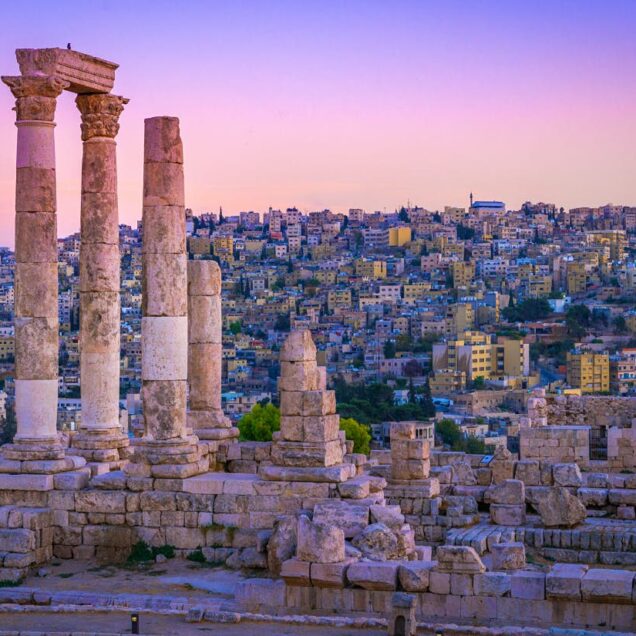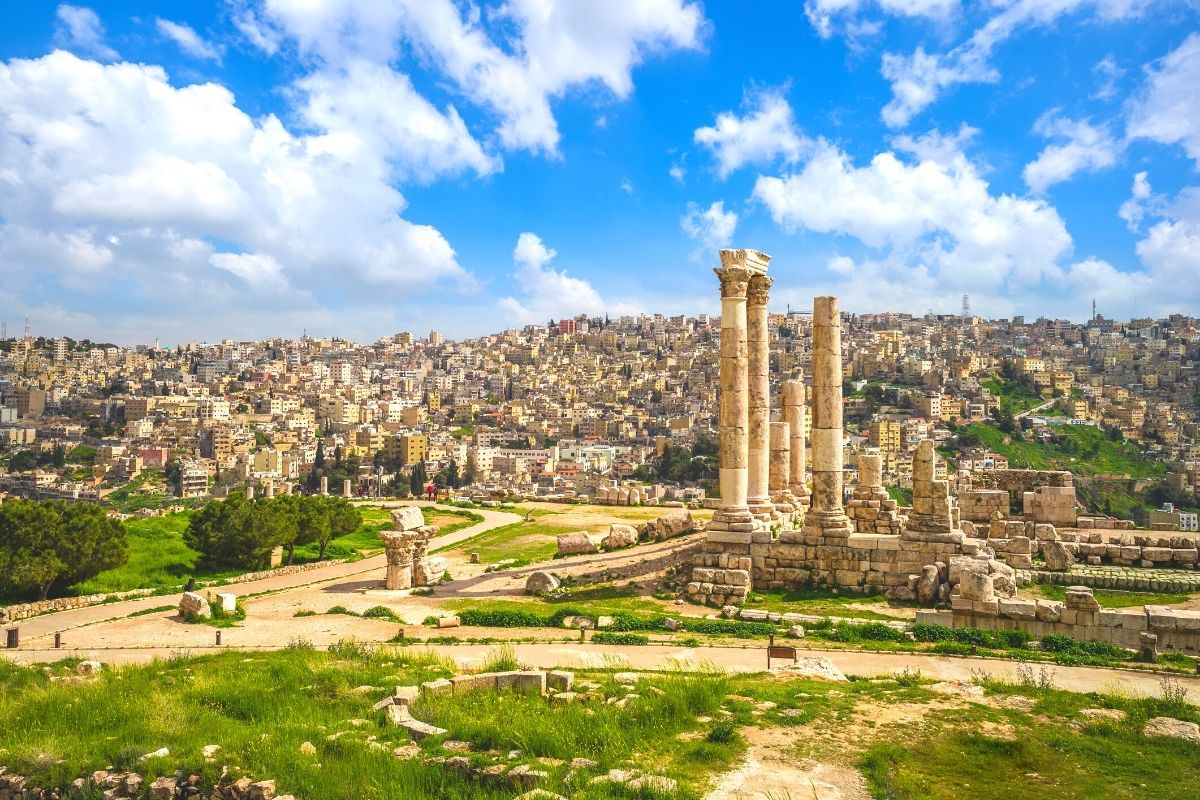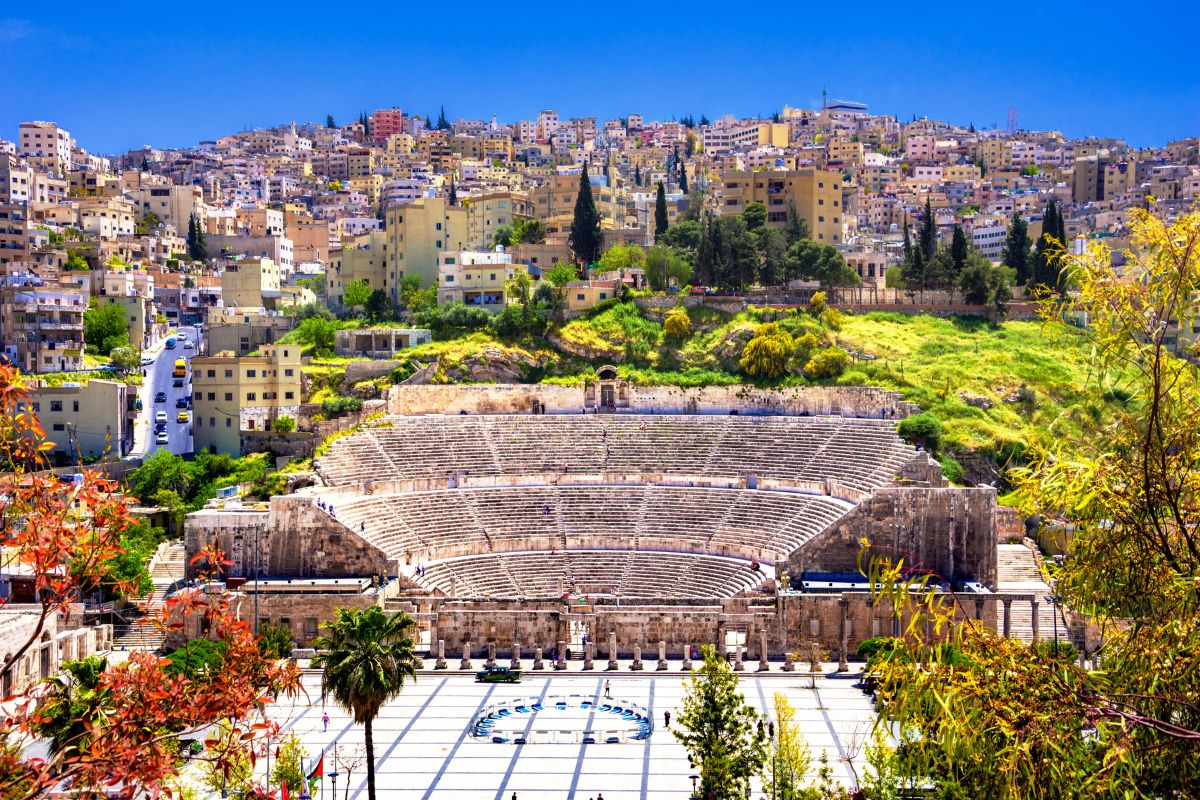Amman
Amman, the capital of Jordan, is a fascinating city of contrasts – a unique blend of old and new, situated on a hilly area between the desert and the fertile Jordan Valley. In the commercial heart of the city, ultra-modern buildings, hotels, smart restaurants, art galleries and boutiques rub shoulders comfortably with traditional coffee shops and tiny artisans' workshops. Amman’s neighborhoods are diverse and range in cultural and historical context from hustle and bustle of the downtown markets to the art galleries of Jabal Lweibdeh and the modern shopping district of Abdali.Activities in Amman
Tour details
- THE CITADEL If a journey through history is what you’re looking for then the best place to start would be the Citadel. Located on a hill it gives visitors a glimpse into the evolution of Amman and provides stunning views of downtown Amman. Among the sites you can’t afford to miss at the Citadel are the Umayyad Palace complex, the Temple of Hercules and the Byzantine Church.
- SOUQ JARA This summer street market in Jabal Amman is open on Fridays, during the summer months, and includes stalls selling local wares, pop-up cafes, street food and live performances from local bands and musicians. If you’re in Amman during the summer, you can’t miss out on this family friendly activity!
- NYMPHAEUM Built in 191 AD, it was once a large two-story complex with fountains, mosaics, stone carvings and possibly a 600 square meter swimming pool.
- HIJAZ RAILWAY STATION View the great collection of working steam locomotives, formerly used for as part of a pilgrimage route connecting the Ottoman Empire to Saudi Arabia and an intrinsic part of the Great Arab Revolt in 1918. For more of an in-depth look at the history of the station make sure to visit the onsite museum.
- JORDAN MUSEUM The Jordan Museum is located in the dynamic new downtown area of Ras al-‘Ayn. Presenting the history and cultural heritage of Jordan in a series of beautifully designed galleries, The Jordan Museum serves as a comprehensive national center for learning and knowledge that reflects Jordan’s history and culture, and presents in an engaging yet educational way the Kingdom’s historic, antique and heritage property as part of the ongoing story of Jordan’s past, present, and future.
- DARAT AL-FUNUN Jordanian, Palestinian, Syrian and Lebanese families built the houses that form Darat al Funun. They are a living memory of the history of Jordan and the shared history of the Bilad al Sham. Darat al Funun today is an oasis for the arts overlooking the crowded downtown area of the old city of Amman. Along with visiting the Darat’s contemporary art exhibitions, many come to admire Amman’s traditional architecture, attend events in the archaeological site, read a book in their art library, or take a walk in the gardens.
- KING HUSSEIN BIN TALAL MOSQUE The King Hussein Bin Talal Mosque, named after the late King, is the largest mosque in the Kingdom. Its architecture reflects the Umayyad style prevalent in several sites in Jordan.
- GRAND HUSSEINI MOSQUE The mosque was built by the late King Abdullah I in 1924 on the site of a much older mosque. It’s conveniently located downtown near the traditional souqs and street food vendors.
- KING ABDULLAH I MOSQUE Built as a memorial by the Late King Hussein to his grandfather, the unmistakable blue-domed mosque can ost up to 7000 worshippers inside and another 3000 in the courtyard area.





